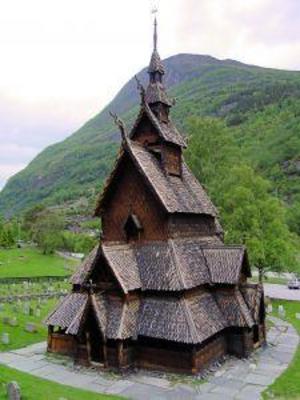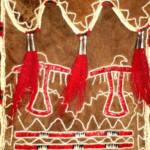Norway is a Scandinavian country, “Land of the Midnight Sun”. Norway is a stunning country with unspoiled fishing villages, glaciers, fjords, rich historic sites and medieval churches.
The United Nations, UNESCO, has developed and maintained a list of significant places in the world, known as the World Heritage List, which is selected by a committee. Of the 851 world wide properties selected by the World Heritage List for their outstanding universal value, seven are in Norway.. Following are the outstanding significant historic places in Norway.
Include some of the following historic sights of Norway in your vacation travel itinerary.
Bryggen: The old wharf is a reminder of the town’s importance in the 14th to the mid 16th century as part of the Fanatic League’s trading empire. There have been many fires over the years which have damaged the beautiful wooding houses of Bryggen. Hanseatic wooden buildings with pointed gables face into the harbor.
During the 13th century, the Northern German Hanseatic League was a dominate factor in Northern European trade. Today Bryggen is one of the most significant examples of the culture and history of a medieval settlement in the world. The main structure is preserved. Of the remaining 58 buildings, many are now used as artists’ studios.
Urnes Stave Church: Wooden church stands in natural surroundings. Th church was built in the 12th and 13th centuries. It was selected are an outstanding example of traditional wooden Scandinavian architecture. The style is a blend of Celtic art, Viking and Romanesque.
Roros Mining Town: Roros stands in a mountainous setting. The history of the town is linked to the copper mines. They were developed in the 17th century and used for 333 years. The tow was destroyed by Swedish troops in 1679, but was completely rebuilt. The medieval town has 80 wooden houses standing around courtyards.
Rock Art of Alta: Near the Arctic Circle is the Alta Fjord. Here there is a group of petroglyphs.. There are traces of a settlement that dates from 4200 PC to 500 BC. There are thousands of paintings an engravings that add to understanding of the environment and human activities of the age.
Vegaoyan – The Vega Archipelago: Just south of the Arctic Circle is a cluster of islands which bear testament to the frugal way of life based on fishing. There are fishing villages, warehouses, quays, eider houses, faring landscapes, lighthouses and beacons. The Vega Archipelago reflects the way that fishermen have maintained a sustainable living in an inhospitable seascape over the past 1,500 years. The contribution make by women to the eider down process is also celebrated.
Struve Geodetic Arc: The Struve Arc is a chain of survey triangulations which stretch from Norway to the black Sea. the points of survey stretch through ten countries. Selected as an extraordinary collaboration between scientists to measure the size and shape of the earth.
West Norwegian Fjords – Geirangerfjord and Naerofjord: Tow fjords are among the longest and deepest fjords in the world. Exceptional natural beauty with narrow, steep-sided crystalline rock wall. The walls of the fjords have waterfalls. Rivers flow across the forests to glacial lakes, glaciers and rugged mountains. These fjords are considered to be among the most beautiful on the planet.




